Themed collection Journal of Materials Chemistry B Emerging Investigators

Journal of Materials Chemistry B profiles: contributors to the Emerging Investigators 2020 issue
Journal of Materials Chemistry B profiles contributors to the Emerging Investigators 2020 issue.

J. Mater. Chem. B, 2020,8, 6507-6516
https://doi.org/10.1039/D0TB90121K
Functional peptide-based drug delivery systems
Representative strategies for designing smart drug delivery systems by using functional peptides in the past few years are highlighted in this review.
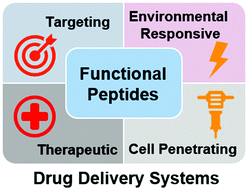
J. Mater. Chem. B, 2020,8, 6517-6529
https://doi.org/10.1039/D0TB00713G
Aqueous surface gels as low friction interfaces to mitigate implant-associated inflammation
Soft implant surfaces should be designed with an eye toward natural, healthy biointerfaces, which use high water content aqueous gel gradients to reduce contact pressures and frictional shear stresses and thus reduce inflammation and discomfort.

J. Mater. Chem. B, 2020,8, 6782-6791
https://doi.org/10.1039/D0TB00582G
Chemoreactive nanomedicine
Triggering specific chemical reactions in the disease microenvironment can produce species for disease treatment that have high theranostic performance and low side effects on healthy cells/tissues.

J. Mater. Chem. B, 2020,8, 6753-6764
https://doi.org/10.1039/D0TB00436G
Overcoming the biological barriers in the tumor microenvironment for improving drug delivery and efficacy
The strategies and obstacles for overcoming the barriers in the tumor microenvironment are presented.

J. Mater. Chem. B, 2020,8, 6765-6781
https://doi.org/10.1039/D0TB00649A
Liquid-phase electron microscopy imaging of cellular and biomolecular systems
Liquid-phase electron microscopy, a new method for real-time nanoscopic imaging in liquid, makes it possible to study cells or biomolecules with a singular combination of spatial and temporal resolution. We review the state of the art in biological research in this growing and promising field.
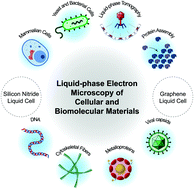
J. Mater. Chem. B, 2020,8, 8490-8506
https://doi.org/10.1039/D0TB01300E
Self-assembly of trigonal building blocks into nanostructures: molecular design and biomedical applications
This review introduces trigonal building blocks and summarizes their structural characteristics, self-assembly ability and biomedical applications.
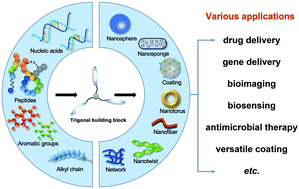
J. Mater. Chem. B, 2020,8, 6739-6752
https://doi.org/10.1039/D0TB01128B
Self-immolative polymers in biomedicine
Biomedical use cases for self-immolative polymers.

J. Mater. Chem. B, 2020,8, 6697-6709
https://doi.org/10.1039/D0TB01119C
From cells-on-a-chip to organs-on-a-chip: scaffolding materials for 3D cell culture in microfluidics
Integrating ECM materials in microfluidics for 3D cell culture.
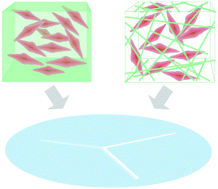
J. Mater. Chem. B, 2020,8, 6667-6685
https://doi.org/10.1039/D0TB00718H
Multimaterial and multifunctional neural interfaces: from surface-type and implantable electrodes to fiber-based devices
Development of neural interfaces from surface electrodes to fibers with various type, functionality, and materials.
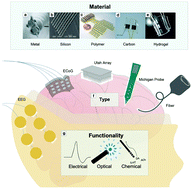
J. Mater. Chem. B, 2020,8, 6624-6666
https://doi.org/10.1039/D0TB00872A
Vapor-deposited functional polymer thin films in biological applications
Vapor-deposited polymer thin films empower the next-generation biological applications including bio-separations, biosensors & bio-MEMS, drug delivery and tissue engineering.

J. Mater. Chem. B, 2020,8, 6588-6609
https://doi.org/10.1039/D0TB00681E
Discovery and design of soft polymeric bio-inspired materials with multiscale simulations and artificial intelligence
Establishing the “Materials 4.0” paradigm requires intimate knowledge of the virtual space in materials design.

J. Mater. Chem. B, 2020,8, 6562-6587
https://doi.org/10.1039/D0TB00896F
Nanoparticle-based biosensors for detection of extracellular vesicles in liquid biopsies
Selecting the appropriate nanoparticle, functionalization chemistry and sensing methodology can speed up the translation of liquid biopsies into the clinic.
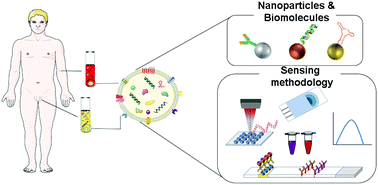
J. Mater. Chem. B, 2020,8, 6710-6738
https://doi.org/10.1039/D0TB00861C
Engineering nanoparticles to tackle tumor barriers
Engineering strategies of nanoparticles were elaborated to overcome delivery barriers from the perspectives of trans-vascular transport and interstitial transport.
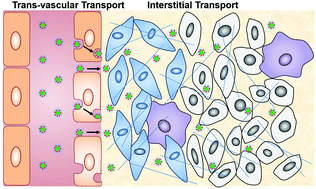
J. Mater. Chem. B, 2020,8, 6686-6696
https://doi.org/10.1039/D0TB00967A
Recent progress in dynamic covalent chemistries for liquid crystal elastomers
This review article discusses the recent progress in designing, synthesizing and programming liquid crystal elastomers with different dynamic covalent bonds.

J. Mater. Chem. B, 2020,8, 6610-6623
https://doi.org/10.1039/D0TB00754D
Biological applications of water-soluble polypeptides with ordered secondary structures
Herein, recent advances in the synthesis of the water-soluble polypeptides with ordered secondary structures via ring-opening polymerization of NCA/NTA and their biological applications are described.

J. Mater. Chem. B, 2020,8, 6530-6547
https://doi.org/10.1039/D0TB00902D
Design of nanomaterials for applications in maternal/fetal medicine
This review discusses the design parameters that are important to consider when developing nanomaterials for applications in maternal/fetal health.
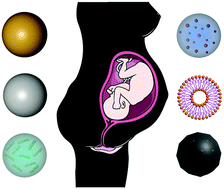
J. Mater. Chem. B, 2020,8, 6548-6561
https://doi.org/10.1039/D0TB00612B
Enabling nanopore technology for sensing individual amino acids by a derivatization strategy
A derivatization strategy was demonstrated for reliable identification of individual amino acids using an α-hemolysin nanopore.
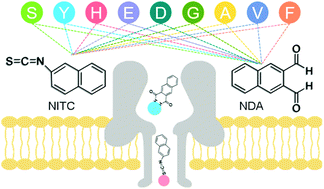
J. Mater. Chem. B, 2020,8, 6792-6797
https://doi.org/10.1039/D0TB00895H
Programmable assembly of gold nanoparticle nanoclusters and lattices
Deterministic assembly of metallic nanoparticles (e.g. gold nanoparticles) into prescribed configurations has promising applications in many fields such as biosensing and drug delivery.
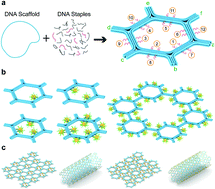
J. Mater. Chem. B, 2020,8, 6810-6813
https://doi.org/10.1039/D0TB00807A
Regulation of cell binding and entry by DNA origami mediated spatial distribution of aptamers
Customizing the spatial distribution of aptamers on DNA origami nanoboxes can regulate the internalization and proliferation of cancer cells.
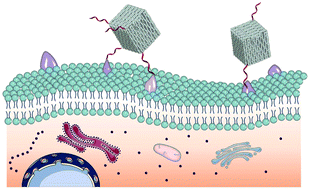
J. Mater. Chem. B, 2020,8, 6802-6809
https://doi.org/10.1039/D0TB00663G
Effect of molecular weight and polymer composition on gallol-functionalized underwater adhesive
A gallol-functionalized polymer showed strong adhesion ability underwater. The effect of molecular weight and gallol content have been optimized resulting in the underwater adhesion strength as high as 4 MPa.

J. Mater. Chem. B, 2020,8, 6798-6801
https://doi.org/10.1039/D0TB00706D
Real-time monitoring of human Schwann cells on heparin-collagen coatings reveals enhanced adhesion and growth factor response
In this work, we evaluate the enhancing effect of six bilayers of heparin/collagen (HEP/COL)6 layer-by-layer coatings on human Schwann cell (hSCs) adhesion and proliferation in the presence or absence of nerve growth factor (NGF).
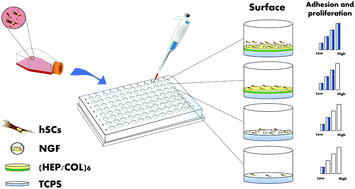
J. Mater. Chem. B, 2020,8, 8809-8819
https://doi.org/10.1039/D0TB01454K
Multimodal spectroscopic investigation of the conformation and local environment of biomolecules at an electrified interface
A combination of mid-infrared plasmons and time-resolved fluorescence are used to probe biomolecules at a buried electrochemically active interface.

J. Mater. Chem. B, 2020,8, 7024-7030
https://doi.org/10.1039/D0TB01158D
Antioxidant shape amphiphiles for accelerated wound healing
We reported a series of POSS-based antioxidant shape amphiphiles for preventing cell oxidative damage and promoting wound healing.
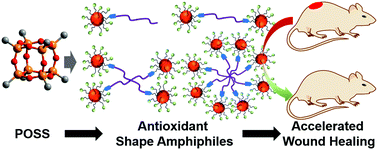
J. Mater. Chem. B, 2020,8, 7018-7023
https://doi.org/10.1039/D0TB00578A
Anisotropic, porous hydrogels templated by lyotropic chromonic liquid crystals
Approaches to control the microstructure of hydrogels enable the control of cell–material interactions and the design of stimuli-responsive materials.

J. Mater. Chem. B, 2020,8, 6988-6998
https://doi.org/10.1039/D0TB00904K
Photo-degradable micelles for co-delivery of nitric oxide and doxorubicin
Photo-degradable triblock copolymers enable the co-delivery of nitric oxide and doxorubicin exerting an improved therapeutic effect.
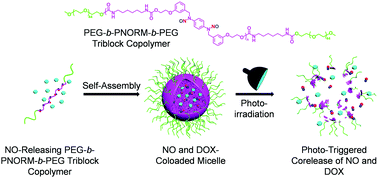
J. Mater. Chem. B, 2020,8, 7009-7017
https://doi.org/10.1039/D0TB00817F
An antibody–supermolecule conjugate for tumor-specific targeting of tumoricidal methylated β-cyclodextrin-threaded polyrotaxanes
A conjugate of an anti-HER2 antibody and polyrotaxane containing methylated β-cyclodextrins (Me-PRX) was designed to achieve a tumor-specific delivery of Me-PRX. The antibody–Me-PRX conjugates efficiently uptaken into HER2-positive cells and induced autophagic cell death.

J. Mater. Chem. B, 2020,8, 6975-6987
https://doi.org/10.1039/D0TB00575D
Ultra-thin, transparent, porous substrates as 3D culture scaffolds for engineering ASC spheroids for high-magnification imaging
We investigated a porous nanosheet to induce the formation of spheroids consisting of adipose-tissue derived stem cells, which is useful not only for engineering 3D cellular organization, but also for imaging the detailed structure of the spheroid.
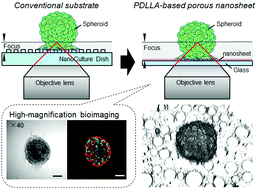
J. Mater. Chem. B, 2020,8, 6999-7008
https://doi.org/10.1039/D0TB00723D
Active targeting nano-scale bubbles enhanced ultrasound cavitation chemotherapy in Y1 receptor-overexpressed breast cancer
Y1 receptor ligand-modified nanobubbles could target breast cancer cells and improve therapeutic efficacy with reduced side effects under ultrasound irradiation during chemotherapy.
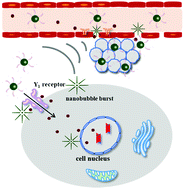
J. Mater. Chem. B, 2020,8, 6837-6844
https://doi.org/10.1039/D0TB00556H
Exploring the inner environment of protein hydrogels with fluorescence spectroscopy towards understanding their drug delivery capabilities
Time-resolved fluorescence have used to explore the inner surface and solvation dynamics within protein hydrogels assisting in rationalizing their drug binding and release capabilities.
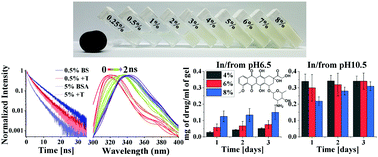
J. Mater. Chem. B, 2020,8, 6964-6974
https://doi.org/10.1039/D0TB00818D
14N–1H HMQC solid-state NMR as a powerful tool to study amorphous formulations – an exemplary study of paclitaxel loaded polymer micelles
14N–1H HMQC experiments are powerful experiments to characterize amorphous drug–polymer formulations of paclitaxel yielding well-separated signals in the 14N dimension as well as information on the symmetry of 14N and 14N–1H interactions.

J. Mater. Chem. B, 2020,8, 6827-6836
https://doi.org/10.1039/D0TB00614A
An MRI contrast agent based on a zwitterionic metal-chelating polymer for hepatorenal angiography and tumor imaging
A zwitterionic MRI contrast agent Gd-PAA with exceptionally high r1 was designed for hepatorenal angiography and tumor imaging.

J. Mater. Chem. B, 2020,8, 6956-6963
https://doi.org/10.1039/D0TB00893A
Effect of conjugated (EK)10 peptide on structural and dynamic properties of ubiquitin protein: a molecular dynamics simulation study
Peptide conjugation modulates the stability and biological acitivty of proteins via the allosteric effect.

J. Mater. Chem. B, 2020,8, 6934-6943
https://doi.org/10.1039/D0TB00664E
Gap-enhanced resonance Raman tags for live-cell imaging
Gap-enhanced resonance Raman tags enable long-term, high-resolution and high-speed (1 ms per pixel) live-cell imaging with a laser power of 50 μW.
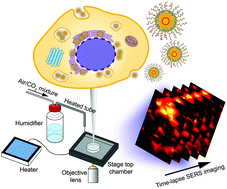
J. Mater. Chem. B, 2020,8, 6944-6955
https://doi.org/10.1039/D0TB00659A
Tuning hydrogel properties with sequence-defined, non-natural peptoid crosslinkers
Helical peptoid crosslinkers confer tunable mechanical properties and enzymatic stability to hydrogels for cell culture.

J. Mater. Chem. B, 2020,8, 6925-6933
https://doi.org/10.1039/D0TB00683A
Calcium alendronate-coated composite scaffolds promote osteogenesis of ADSCs via integrin and FAK/ERK signalling pathways
Calcium alendronate-coated composite scaffolds not only displayed excellent cytocompatibility and cell adhesion but also promoted osteogenic differentiation of ADSCs.
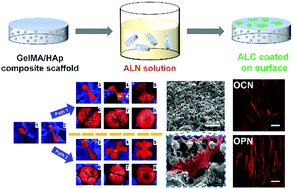
J. Mater. Chem. B, 2020,8, 6912-6924
https://doi.org/10.1039/D0TB00571A
Phosphate-responsive 2D-metal–organic-framework-nanozymes for colorimetric detection of alkaline phosphatase
Phosphate-responsive peroxidase-mimicking two-dimensional-metal–organic-framework nanozymes were employed to develop alkaline phosphatase assays with tunable dynamic ranges and colorimetric logic gates.
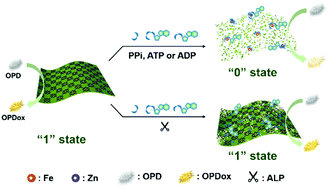
J. Mater. Chem. B, 2020,8, 6905-6911
https://doi.org/10.1039/C9TB02542A
Morphology tunable and acid-sensitive dextran–doxorubicin conjugate assemblies for targeted cancer therapy
Morphology tunable and acid-sensitive dextran–doxorubicin conjugate assemblies (DD-M and DDF-V) were developed for targeted cancer therapy.
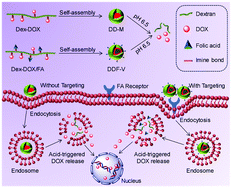
J. Mater. Chem. B, 2020,8, 6898-6904
https://doi.org/10.1039/D0TB00746C
Clickable decellularized extracellular matrix as a new tool for building hybrid-hydrogels to model chronic fibrotic diseases in vitro
Hydrolytically stable, phototunable hybrid-hydrogels containing clickable decellularized extracellular matrix enable spatiotemporal control over fibroblast activation.

J. Mater. Chem. B, 2020,8, 6814-6826
https://doi.org/10.1039/D0TB00613K
In vivo immunological response of exposure to PEGylated graphene oxide via intraperitoneal injection
2D PEGylated graphene oxide showed stealth-but-immune-activating capacity on macrophages, along with specific intraperitoneal immunological response in vivo.

J. Mater. Chem. B, 2020,8, 6845-6856
https://doi.org/10.1039/D0TB00499E
Amphiphilic BODIPY dye aggregates in polymeric micelles for wavelength-dependent photo-induced cancer therapy
We have reported a facile strategy to tune the photoconversion of organic dye aggregates for achieving potent photo-induced cancer therapy.
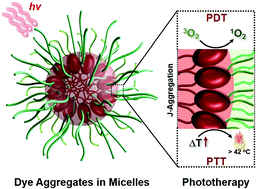
J. Mater. Chem. B, 2020,8, 6886-6897
https://doi.org/10.1039/D0TB00609B
Self-assembly of paramagnetic amphiphilic copolymers for synergistic therapy
Theranostic nanoparticles composed of amphiphilic paramagnetic polymers are assembled for dual mode imaging and synergistic therapy.
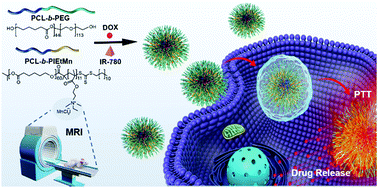
J. Mater. Chem. B, 2020,8, 6866-6876
https://doi.org/10.1039/D0TB00405G
Theranostics system caged in human serum albumin as a therapy for breast tumors
Biomimetic materials are attracting increasing attention in the field of drug delivery due to their low immunogenicity, good biocompatibility and degradability.

J. Mater. Chem. B, 2020,8, 6877-6885
https://doi.org/10.1039/D0TB00377H
Tumor-specific nanomedicine via sequential catalytic reactions for accurate tumor therapy
A tumor-targeting nanoreactor was developed to perform TME-triggered chain catalytic reactions and achieved satisfactory and accurate tumor therapy.
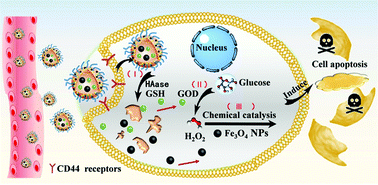
J. Mater. Chem. B, 2020,8, 6857-6865
https://doi.org/10.1039/C9TB02812A